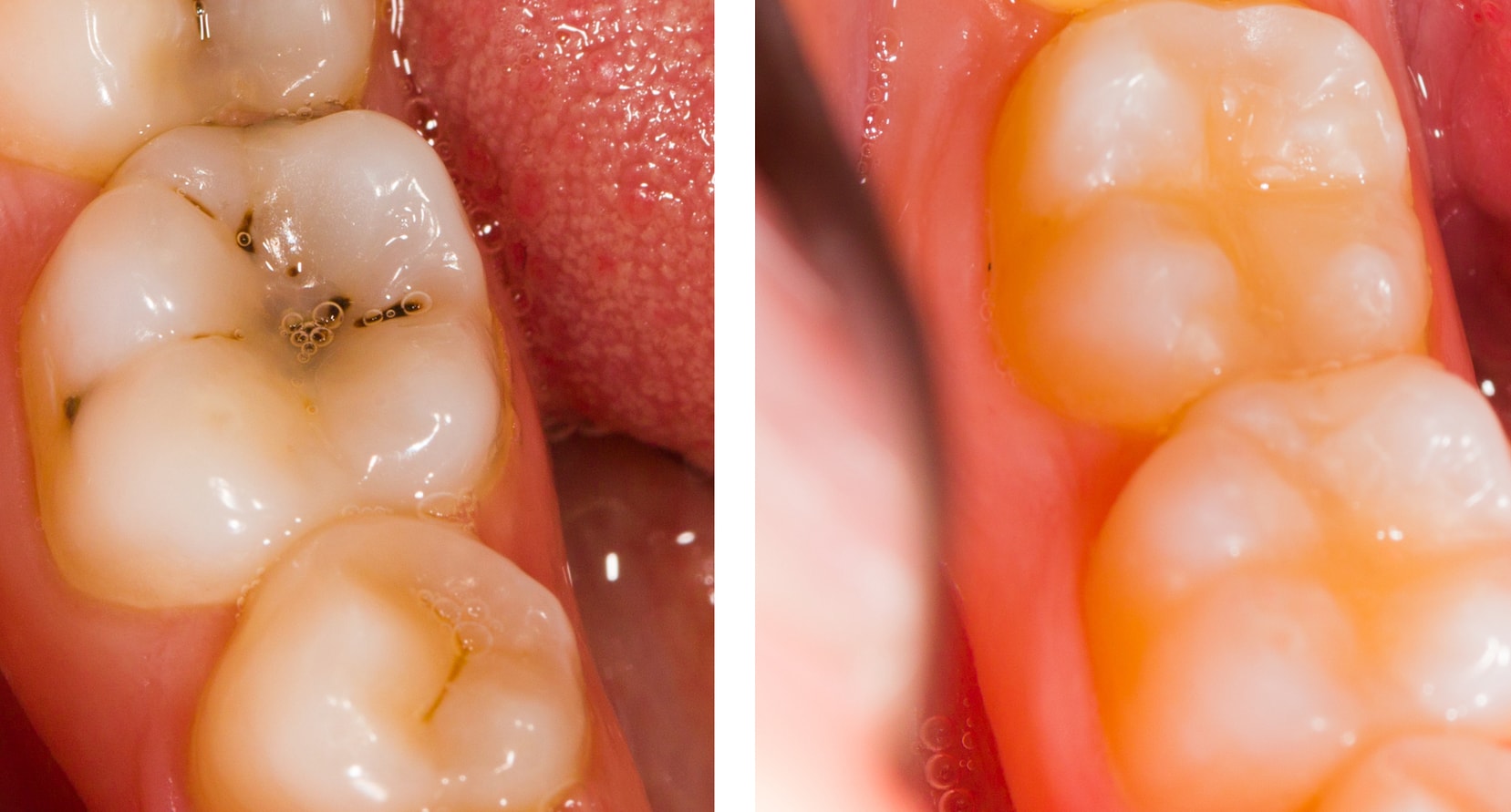
Direct composite dental bonding is a way to modify the shape, color, position and texture of the teeth to recreate a smile. Direct composite dental bonding can address issues such as cracked or chipped teeth, closing gaps between the teeth, improving the discolored appearance of teeth and changing the shape of the teeth. A tooth-colored resin material is applied to the treated area and is bonded to the tooth using adhesives and a high intensity curing light.
GOOD CANDIDATES for this treatment include patients with:
Patients who are likely NOT GOOD CANDIDATES include:
The tooth that will be treated will be prepared (cleaned) and then the surface is etched with an acid type gel in order to make it easier for the composite material to adhere to the tooth. The composite material, also known as the bonding agent, is applied to the tooth.
The dentist then shines a light source, called a “curing light”, on the treated tooth and this causes the composite material to harden and become solid. The composite material is often applied in layers so the doctor can monitor it more closely to achieve the desired results. Once the material has hardened, it is polished to give a smoother appearance that also matches the surrounding teeth.
Tooth Reduction
There are times when the tooth will need to be reduced before the bonding process is performed but this is not always the case. For example, when a tooth is projected forward to an extreme degree, there is a need to reduce that area of the tooth. But if there is room to add more volume to an area, there is no need for tooth reduction.
Direct Bonding vs. Porcelain Veneers (Indirect Bonding)
Other Treatments
While dental bonding provides good results, some patients choose to combine it with other treatments to get more dramatic results:
The cost depends on the number of teeth treated as well as the type of bonding performed and if insurance covers any of the costs. In general, the cost of direct composite dental bonding is $350-$600 per tooth while the price of porcelain veneers is $700-$1500.
There is little RECOVERY time after direct composite dental bonding. Any pain or discomfort is temporary and will resolve itself within a few hours or a day or two.
Patients need to be careful not to bite on anything that is too hard, crunchy or abrasive. They have to be cautious for the first few weeks to allow the mouth to get used to the new shape of the teeth. They should also stay away from food and beverages that may darken the bonding.
Dental bonding provides immediate results once the procedure is completed. The hardened material looks natural and blends in with the other teeth. Overall, the results can last anywhere from 8 to 12 years.
As time passes, direct composite dental bonding may become dull looking and change color. It may also chip but that can be repaired. They should be treated like normal teeth with brushing and flossing. They can trap plaque and decay at the margins in-between the teeth and at the gum line. The bonding may stain at the margins. A patient has to be extra diligent with proper home care and visits to their dental office for routine cleanings and check-ups. Porcelain veneers can also chip but not as readily as bonding. However, if the porcelain cracks or chips, a new veneer may be necessary.
If bonding darkens over time, bleaching can reverse some of the stain build-up and whiten the teeth. The shade or color of the bonding cannot be reversed after it is placed. A person cannot go brighter than the specific shade that has been put on the tooth. However, if the bonding darkens a bit over the years, it can be reversed to its original color with professional whitening. It is better to have a professional supervise the whitening. If a patient applies it incorrectly, they may actually weaken the bonding.
Before making the final decision to have direct composite dental bonding, there are some LIMITATIONS patients should be aware of:
Some of the more commons RISKS of direct composite dental bonding include:
Direct composite dental bonding can improve a smile in many ways. From modifying the shape and color to improving the texture of the teeth, a smile can be enhanced by a doctor with an artistic touch. Due to the nature of the treatment, it is important to find a specialist in the realm of cosmetic dentistry with the necessary knowledge, hands-on experience and skills in performing bonding procedures. An experienced doctor can help patients determine if direct composite dental bonding is the right choice to fix their dental issues.
Written by Cosmetic Town Editorial Team - MA
Based on an exclusive interview with Emanuel Layliev, DDS in New York, NY